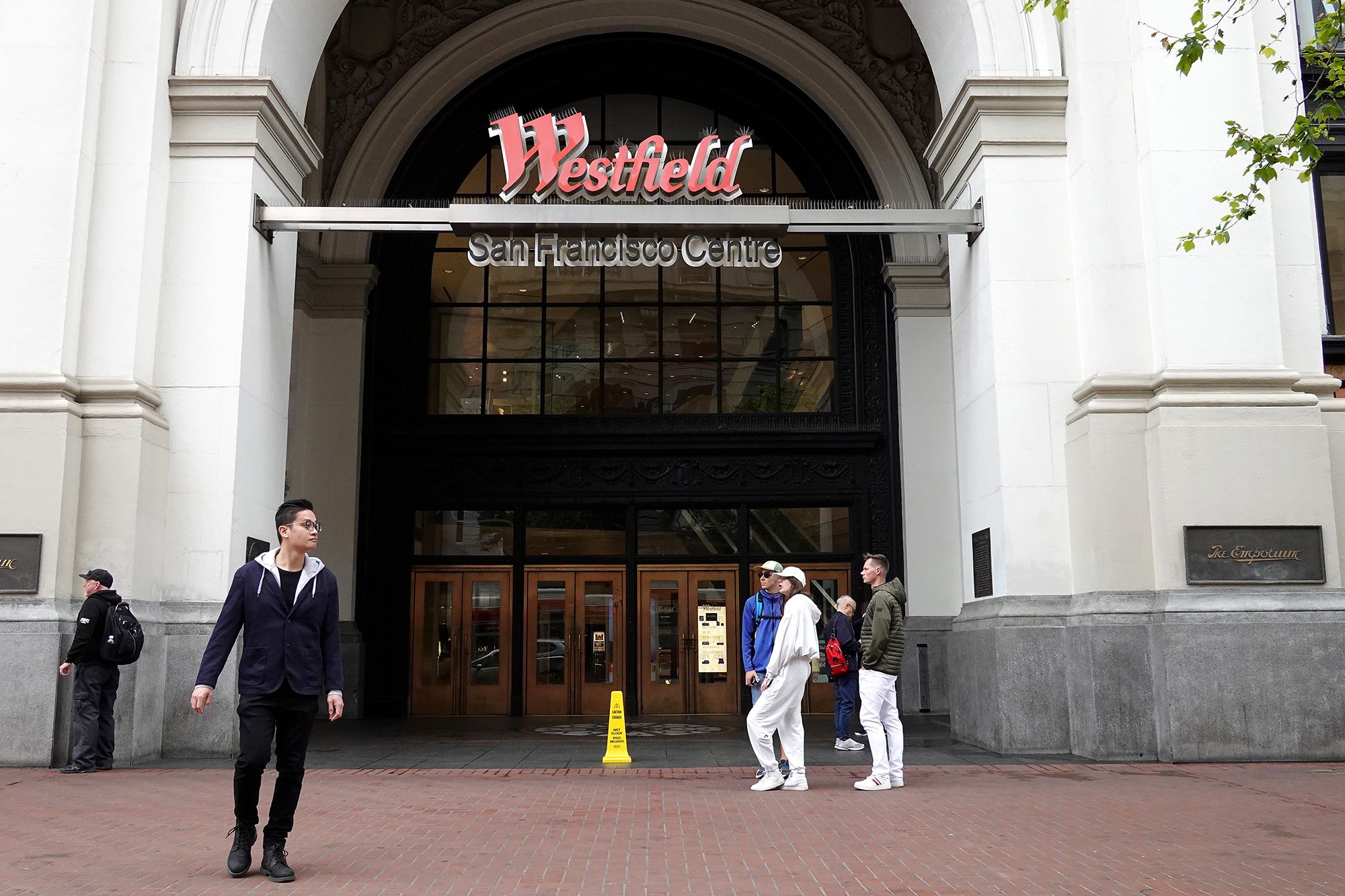San Francisco is dying. We can tell from videos online that robberies and violent crimes are through the roof and the city is a decaying relic: a metropolis turned into a third-world hellscape. The beautiful city that starred in films and television shows such as Vertigo and Full House has completely changed into a failed state as a result of California’s liberalism. Your uncle’s friend’s cousin had their honeymoon in San Francisco in the 90s but when they visited last month, they hated it so therefore the city is going down the drain. And nothing symbolizes this trend more than Downtown San Francisco’s Westfield Mall finally closing its doors for good.
At least, that’s how the media portrays it. The reality is far more complicated and nuanced than this hysterical point of view that has seemingly infected not only the fringe right but somehow most of the mainstream media’s talking points too. San Francisco is simply one of many case studies of media sensationalism influencing the public to think of issues in a one-dimensional, accusatory manner instead of aiming to comprehend the complexity of reality. The Downtown San Francisco Westfield Mall failed not because of San Francisco’s municipal policies on crime, but, rather, because of the larger trend of mall shutdowns and downtown retail closures across the nation.
According to Business Insider, there are only 700 malls left in the United States compared to 2,500 at its peak in the 1980s. The trend is likely to continue in this direction. Nick Egelanian, the president of SiteWorks, a retail consulting firm, says that there could be as few as 150 malls left in the United States within 10 years. In 2020, Coresight Research estimated that 25% of malls would shut down within the next five years. This phenomenon, while exacerbated by the COVID-19 pandemic, has been trending on this course for years. As the online shopping industry grew rapidly over the early twenty-first century, the need for large shopping complexes such as malls decreased accordingly.
Furthermore, the growth of giants like Amazon created a greater demand for warehouses and other industrial buildings to help aid shipping and packaging. Noticing these trends, real estate investment firms devoted less of their portfolios to financing malls and more to the aforementioned asset classes. Without funding from financiers, it became significantly harder to develop new malls. As a result, when a mall dies, there is no reincarnation, so to speak. Today, a dying mall means one less mall in America.
So what? Malls are generally dying across the country. That doesn’t detract from the fact that downtown San Francisco went from the Garden of Eden to a cesspool of crime à la The Purge, which drove out retailers from Westfield. Right?
San Francisco, especially downtown, has always faced issues with crime since its creation as a rough and tumble gold rush port city. It is historically a gritty city, with drugs and prostitution visible on the streets. As a region with incredibly high wealth inequality, property crime and petty theft has always been relatively commonplace. Compared to pre-pandemic levels, these current rates are fairly similar. In regards to violent crime, the rate is at an all time low.
But if the statistics do not back up this general feeling of San Francisco’s spiral into hell, why do we all feel that way?
What do Chicago, Portland, and San Francisco have in common? Each, at one point in time, has been demonized by the media cycle. Chicago was dubbed “Chiraq” as a result of its gun-related crimes. While the issue of gang warfare and gun-caused deaths is an issue that remains in the city, statistics showed that Chicago’s crime rates and gun deaths per capita were all significantly lower than those of red state cities like Cleveland or Memphis. For a few years in the 2010s, it would be difficult to have a Thanksgiving dinner without some parent, uncle, aunt, or grandparent telling you about how they heard on Fox, CNN, or MSNBC that the city was a warzone.
Over time, the media commentary became oversaturated and people moved on. Desperate to get viewers to tune in for a new story, cable news outlets and other news media started to fixate on Portland during COVID-19. Once the darling hipster town of the west, with its walkable blocks and proudly weird culture, Portland had been deemed a chaotic post-apocalyptic anarchist horror, a city overtaken by left-wing radicals for the sole purpose of burning it all down during protests. It became a place that was so out of control, the feds had to get involved.
The media, yet again, pounced on this chaos to fill their 24-hour news cycle. In the eyes of CNN, Fox News, the New York Times, and more, Portland had turned to chaos, not because of the active pandemic occurring or the murder of an innocent Black man that spurred a debate about police brutality across the nation, but rather, because it was a liberal Democrat-run city.
Yet again, people became fatigued from hearing about Portland every day and it lost its relevance in the news cycle. However, the sentiments portrayed to the public at the time remain in the general consciousness despite reports quietly released that the city was intentionally politicized by the federal government.
And now we arrive back at San Francisco, the next victim of the media scapegoat, wandering from city to city. In a country with dozens of major news sources, how do we all converge on one singular narrative that is not represented in facts?
Every cancer starts with a mutation. In a news landscape where the largest organizations are privately owned and must compete for views, each channel, newspaper, and website wants to offer something different. A unique point of view can help but nothing gets eyes watching like covering a story that no one else is. Better yet, a news story that will get people riled up, talking to their friends and family about it, increasing demand for its coverage.
In the example of media dogpiling on certain liberal cities, the hysteria begins with the right wing. Channels like Fox News, Newsmax, or OANN thrive on the anger of conservative viewers. They understand that they cannot blame a president for every issue in America because their viewers can gauge the difference between their realities and how the media is discussing said reality. This presents an issue as it prevents these news outlets from sensationalizing as people will change the channel if they feel they’re watching total falsehoods.
These outlets, therefore, choose a city to shame instead. Because the majority of their conservative viewers do not live in these specific liberal cities, they can get away with making as grand claims about their failures as they can because their audience does not have firsthand evidence to prove the contrary. As viewers become more outraged by the failures of liberal policies depicted to them by the news, the same outlets begin ramping up their coverage of these issues, creating a positive feedback loop of rage.
Wanting to cash in on this new market of topic and avoid seeming partisan by ignoring it, more centrist and center-left organizations like CNN, MSNBC, or the New York Times will also begin covering the liberal failed city of the week. While they are less belligerent in their rhetoric than the mainstream right-wing sources, they still maintain the same general sentiment. They will not outwardly admit this similar point of view but will produce headlines like “Democrats Need to Understand the Real Message San Francisco Sent,” or “What Happened to San Francisco?”
While these stories eventually fade away from the limelight in favor of more profitable ones, they create a permanent negative impact on the public consciousness. Yes, cable news may have stopped calling Chicago “Chiraq” or referring to Portland as the source of Antifa every 30 minutes but the sentiment that municipal partisanship single-handedly destroyed them remains.
The average individual cannot spend time conducting their own journalism or statistical research into these issues. To remain informed of the world around us, we have to rely on mainstream news organizations. To summarize the complexity of every issue in the world enough to fit into an hour-long block or a 700 word article, some simplification is necessary. However, this is where the danger arises.
By combining this oversimplification with a political slant and a profit incentive, news organizations place the search for truth as a much lower priority. And because people cannot do their own research, our framing of the world starts to distance itself from reality more and more, hurdling away as we repeat unfounded claims to each other that we have to believe because we are not provided with anything better.
Featured Image Source: CNN






Comments are closed.